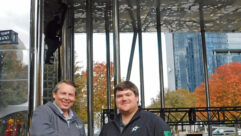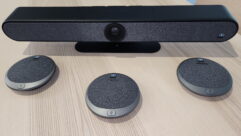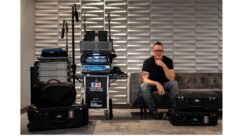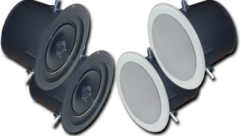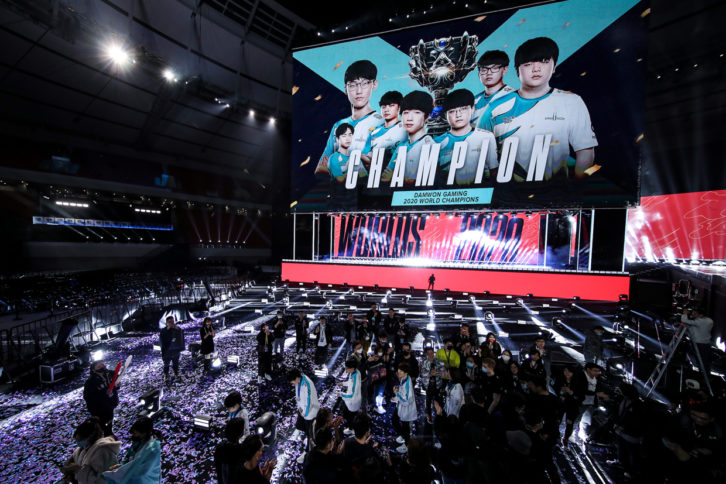
Everyone expected the 10th anniversary of the League of Legends World Championship (Worlds) to be historic, just not in the way that it was. Like so many things in 2020, the world’s most watched esports event made unanticipated history; it also pushed innovation at a pace no one could have imagined possible. Necessity, risk, expertise, and engineering came together for what was widely praised as a production and esports triumph.
Much of the consumer press attention went to the stunning set, which reportedly drew on some of the same Unreal Engine-driven technology used by filmmakers on The Mandalorian. The Riot production team and their production partner Possible brought Worlds to Shanghai without live fans but with a dramatic mixed reality vision that changed for each stage of the tournament, each based on one of League’s elemental dragons. Using massive 32K resolution LED screens and physical desks for the players on the live set, the team integrated a 360-degree virtual background seen by the 3.8 million stream viewers who tuned in over the course of 240 broadcast hours.
Normally the live tournament tours to multiple locations in cities throughout the host country. For obvious reasons that wasn’t practical for 2020, so the entire month-long tournament played out in the hybrid Shanghai arena. Given this accommodation, the production team had to consider how to engage the worldwide audience, and just as importantly, how to give the elite athletes a great supported experience for one of the highlight competitions of their careers.
Videogames have always blurred the line between real and virtual; that aesthetic came through in the groundbreaking broadcast. However, esports is at its core a sport. Underneath the entertainment, athletes must be able to do their jobs at the highest level.
So it is often the unsung technical details and infrastructure that matter most.
Scott Adametz, Riot’s Global Head of Technology of Riot Games, explains that for Worlds, one important example was the headset that was purpose-built and had its first outing at the Shanghai tournament, where it was integrated into a complex audio over IP network. The development of this next-gen headset was one engineering adventure story among many on the road to Worlds.
Adametz standardized the custom-engineered Bose B40 headsets to both production people and gamers. Certainly for production people, the headset is the lifeblood of communication. For gamers, the headset is even more than that—it’s an extension of their senses and their brains. In a performance that hinges on a constant, unrelenting stream of split-second reactions, the fidelity and response of the headphones must keep up
Adametz knows both sides of the equation. He was a broadcast journalism major who also sampled electrical engineering; he landed on applied technology as his sweet spot, especially on the global stage of sports. He has worked in tech operations for NFL Media and launched national media networks for FOX, the Big Ten and PAC-12 Conferences. Now as the esports tech lead at Riot Games, he serves a franchise that is played by more than 115 million unique gamers every month and hosts an event that rivals the Super Bowl for viewership. While Adametz supports the wider League of Legends community with his broadcast chops, his work is most focused on taking care of the unique technical needs of the upper echelon pro players.
His technical team encompasses technologists, network engineers, systems engineers and programmers, who wrangle infrastructure, code, automation, and DevOps; it takes a broad range of expertise and a cutting-edge stack of ever-upgrading technology. “We control all aspects of it all the way down to the processors that we use and certain settings that will enable or disable to ensure deterministic performance and the highest level of competitive integrity.” Adametz elaborated to SportTechnie.com shortly before Worlds kicked off.
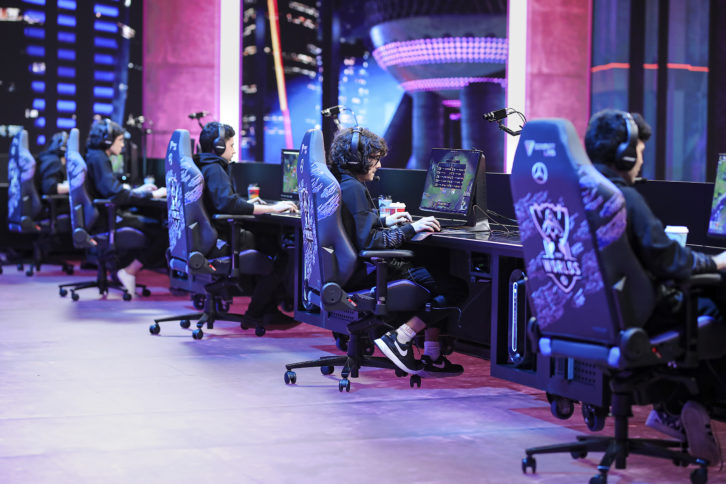
For Worlds, Adametz worked with Bose for over a year on a bespoke headset designed to advance the level of play with its audio capabilities and comfort and unobtrusiveness for players.
Bose is of course an industry leader in headsets for elite professionals, from helicopter pilots to the NFL coaches Adametz knew from his traditional sports days. But nuance is everything. Just as a helicopter pilot will have highly specific needs for noise cancelling and intelligibility, so will gamers, who wear their headsets for hours on end while engaging in highly detailed and fast-paced athletics.
“Think about a football stadium—that’s a crazy high noise environment rivaling a concert. So a coach’s headset is designed to prioritize the vocal ranges, while still letting in the atmosphere; they basically have to hear themselves shouting over the crowd.”
But, he says, while gamers may shout, some will whisper and in most cases are talking constantly among their teammates.“ The fidelity of the microphone pickup has to be very high and accommodate a really wide frequency response without amplifying crowd noise and without allowing in any outside voices that could influence play decisions. “They need to hear only their teammates and they need to hear them very clearly.” Coaches are actually not in the live mix, though referees listen to player communication. “Games are literally won or lost based on clear communications.”
Adametz says the development started with taking a look at Bose’s lineup of pro grade headsets for different markets including aviation and media, production. “We went down the path—could a helicopter headset be adapted? We had deep meaningful discussions initially around the A20.”
Then came the pivot to the B40, which had the benefit of being designed for crews working 10 to 12 hours a day, where comfort and vocal clarity was important. “But we didn’t think the frequency response was wide enough to support the kind of nuanced communication we needed,” Adametz recounts, “and we also needed more noise cancellation than we could get for the NFL-specific headsets. We really have to shut the outside vocal ranges out—there cannot be a situation where a player has a competitive advantage from something they have overheard.”
At the same time, players need a wide dynamic range and sensitive mic pickup for the voices they do need to hear. “We challenged Bose to come up with a bespoke, completely custom headset based off the B40 but that solved the needs that were specific to us.”
The Worlds production crew uses the headsets in a more traditional configuration over an intercom; the signal for the players travels over an audio over IP network, creating mixes for each player individually via Yamaha QL mixers. Part of the gameplay includes noises that come from the game; players do not play muted. And of course all this has to happen without latency—as close to real time as possible.
On the crew side, the active noise cancelling was a no-brainer. Adametz says the crew were “beyond happy with it. It removes stress from the day and makes it less fatiguing.”
For the players, it was a more open question.
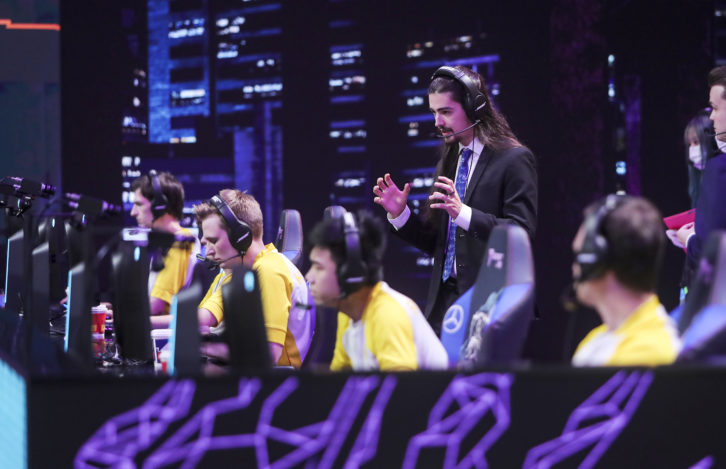 “We were nervous. This was the first time we ever had a gaming headset with active noise cancellation, so we felt the players had to be able to disable it in case they become disoriented or aren’t used to that experience. So it had an off switch. But I’m happy to say we’ve had nothing but positive response to active noise cancellation.”
“We were nervous. This was the first time we ever had a gaming headset with active noise cancellation, so we felt the players had to be able to disable it in case they become disoriented or aren’t used to that experience. So it had an off switch. But I’m happy to say we’ve had nothing but positive response to active noise cancellation.”
“Bose took our existing headphones into an anechoic chamber on a block head so they could see the kind of pickup we were looking for. They came up with a mic positioning that was much closer to the mouth, so players wouldn’t have to raise their voices.”
“To their credit, Bose confirmed the difference between the B40 and the spec we needed,” Amertz says. “That was music to our ears, to know that they got it. They came back with a prototype and they nailed it. We used it for the entire show for Worlds as its first outing.
Adametz sees the technology as a support for players who have their own techniques to delete distraction and play at their highest level. “At the end of the day, these are the best players on earth. We would be doing them a disservice to give them anything less than the best technology.”


